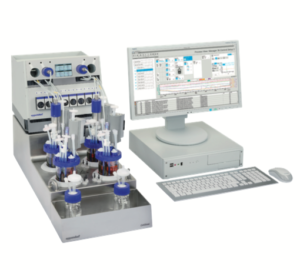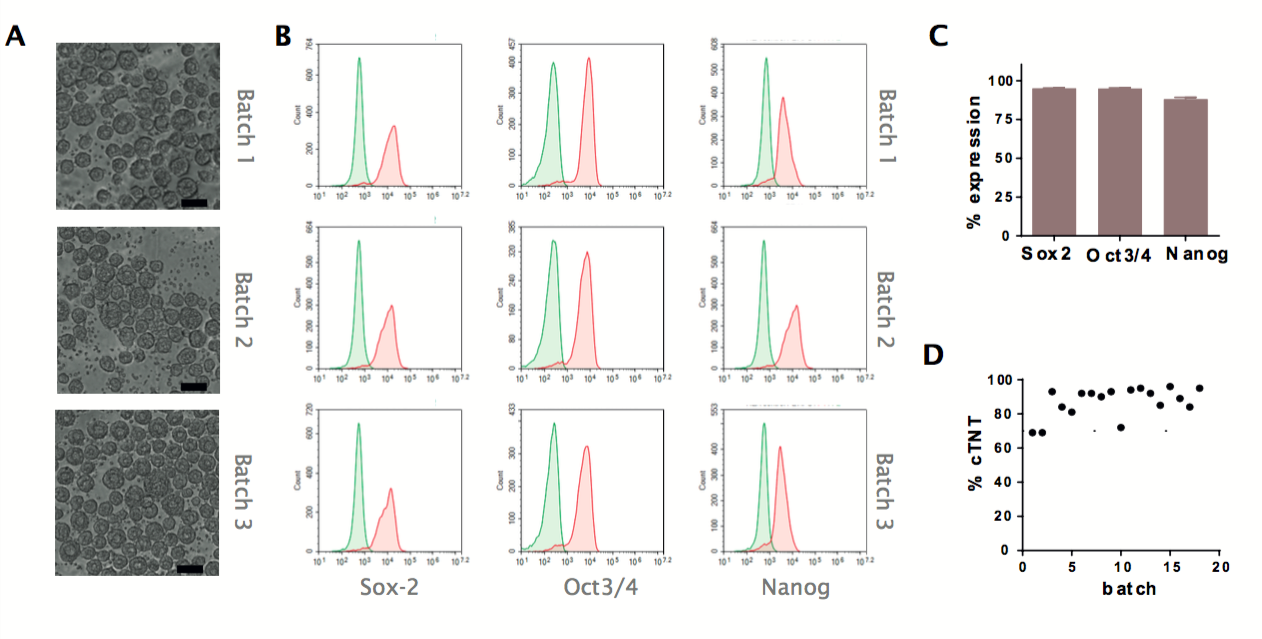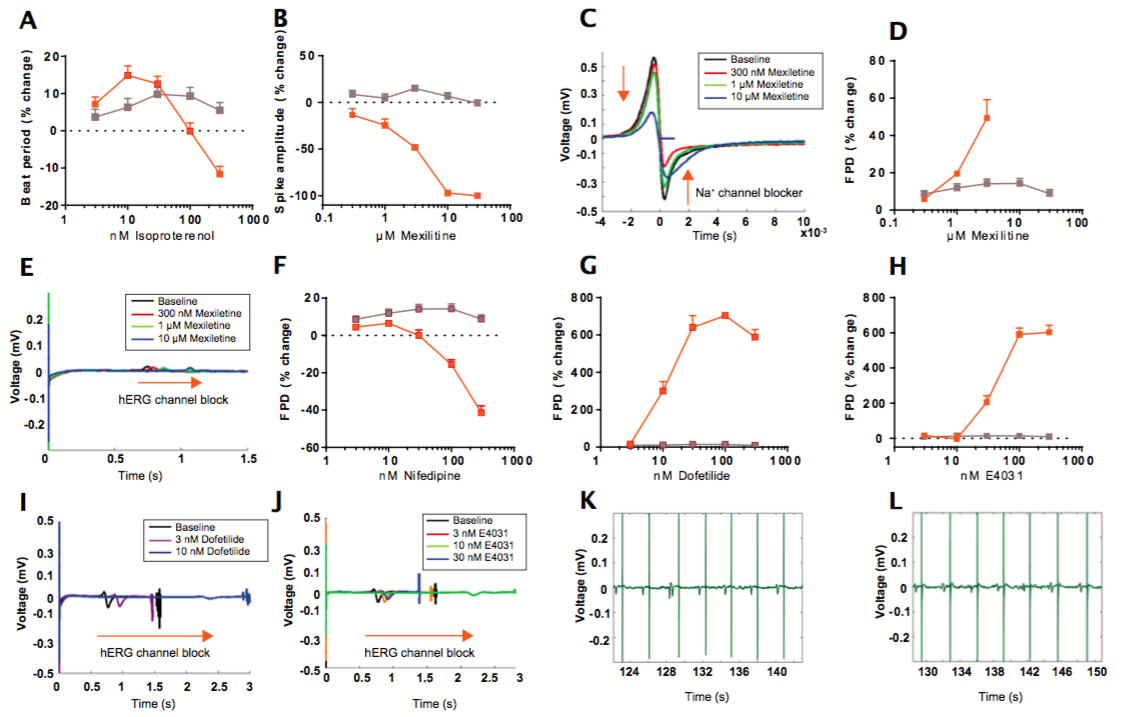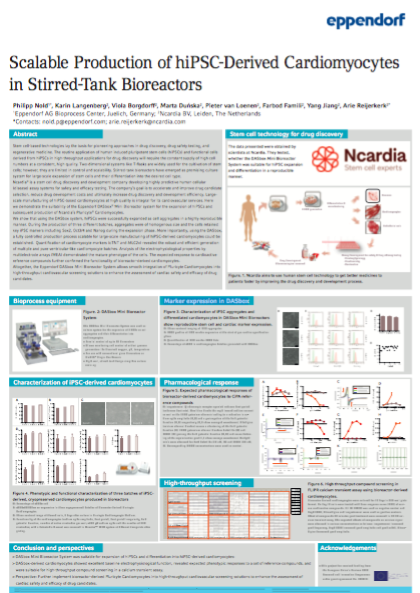
Scalable Production of hiPSC-Derived Cardiomyocytes in Stirred-Tank Bioreactors
As part of our continuing conference coverage of the International Society of Cell & Gene Therapy 2018 held in Montreal, QC, we like to highlight interesting posters from the event. One such poster, “Scalable Production of hiPSC-Derived Cardiomyocytes in Stirred-Tank Bioreactors” was jointly presented by Eppendorf and Ncardia®. In the poster, data from Ncardia scientists was presented showing the successful integration of the Eppendorf DASbox® Mini Bioreactor System for the large-scale expansion of hiPSCs and subsequent production of Ncardia’s Pluricyte® Cardiomyocytes.
The Importance of hiPSC Derived Cardiomyocytes
The use of human induced pluripotent stem cells (hiPSCs)-derived cardiomyocytes as an in vitro model has become popular for researchers and drug discovery companies alike, because they are a continuous and reliable source of cardiomyocytes, which are difficult to obtain from primary tissues. Because these cardiomyocytes share the same genetic background, they are of particular value for disease modeling and comparison studies. In order for these cells to be effective as prognostic tools, they need to show similar functionality to in vivo cells with respect to their metabolism, electrophysiology and response to pharmacological agents.
A major challenge to overcome for the application of hiPSCs and their functional derivatives in high-throughput workflows for drug discovery is the ability to obtain a consistent and high number of quality cells. Traditional two-dimensional culture systems like T-flasks are widely used for the cultivation of stem cells, but they are limited in control and scalability. The use of stirred-tank bioreactor technology has emerged as a promising alternative for the large-scale expansion of hiPSCs and their differentiation into the cardiomyocytes.
Ncardia
Ncardia is a stem cell drug discovery and development company developing highly predictive human assay systems for safety and efficacy testing. The company aims to accelerate and improve drug candidate selection, reduce drug development costs and increase drug discovery and development efficiency. Large scale manufacturing of high quality hiPSC-based cardiomyocytes is integral for its cardiovascular services. Therefore, they were interested to assess the utility of the Eppendorf DASbox Mini Bioreactor System for the expansion of hiPSCs and subsequent production of Ncardia’s Pluricyte Cardiomyocytes.
Successful Cell Expansion using DASbox Mini Bioreactor System

The DASbox is a unique mini bioreactor system suitable for microbial and cell culture designed as a 4-fold system with up to twenty-four parallel operating bioreactors. The DASbox features include:
- Parallel control of up to 24 bioreactors
- Monitoring and control of critical process parameters like dissolved oxygen, pH, temperature
- For use with conventional glass bioreactors or BioBLU® Single-Use Vessels
- Rigid-wall, stirred-tank design simplifies culture scale-up
Lot to Lot Consistency
The Ncardia team demonstrated the DASbox system could successfully expand hiPSCs as cellular aggregates in a highly reproducible manner, in addition to facilitating their differentiation into cardiomyocytes. During the production of three independent batches, aggregates were of homogenous size and the cells retained key hiPSC markers including Sox2, Oct3/4 and Nanog during the expansion phase (Figure 3).

A: Phase contract imaging of iPSC aggregates
B: FACS profiles of iPSC marker expression at the start of pre-cardiac specification phase
C: Quantification of iPSC marker FACS data
D: Percentage of cTNT in cardiomyocytes batches generated with DASbox
Generation of Functional Cardiomyocytes
The DASbox-cultured hiPSCs were differentiated into cardiomyocytes. They were characterized by quantifying cardiomyocyte markers cTNT and MLC2v. Their electrophysiological properties were assessed using multielectrode arrays (MEA). The cardiomyocytes demonstrated high expression of both cTNT and MLC2v markers indicating the efficient generation of pure ventricular-like cardiomyocytes over multiple batches. These cells also showed cardiac action potentials consistent with the mature phenotype of the cells further confirming their functionality. Importantly, these cells showed the expected pharmacological responses to cardioactive reference compounds, and acted in the predicted manner in a high throughput compound screening in the FLIPR calcium transient assay, demonstrating their utility for drug screening and discovery workflows (Figure 5).

A: Isoproterenol (β-adrenergic receptor agonist) reduces beat period (enhances beat rate). Mexilitine blocks the rapid inward sodium current as well as the hERG potasium channels leading to a reduction in sodium spike amplitude (B, C) and a prolongation of the field potential duration (D, E) respectively (C, E show averaged waveforms). Nifedipine (calcium channel blocker) causes a shortening of the field potential duration (F). hERG potassium channel blockers dofetilide (G) and E4031 (H) prolong the field potential duration (G, H) and cause flattening of the repolarization peak (I, J show average waveforms). Arrhythmia’s
were observed for both dofetilide (10 nM, K) and E4031 (30 nM, L). Corresponding DMSO concentrations were used as control.
Conclusions
Taken together, the Ncardia team showed the Eppendorf DASbox Mini Bioreactor System was an effective tool for large scale expansion of hiPSCs and subsequent differentiation into cardiomyocytes. These promising results have prompted the company to further integrate the DASbox-derived Pluricyte Cardiomyocytes into additional high-throughput cardiovascular screening protocols to increase their capacity to assess the cardiac safety and efficacy of novel drug candidates.
For full data and more information, please see full size of poster by clicking below.
For more information on the Eppendorf DASbox Mini Bioreactor System, please visit:
